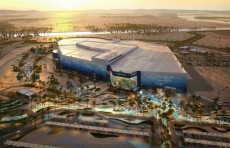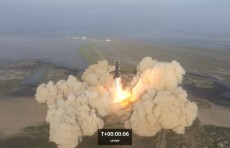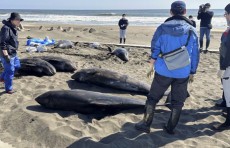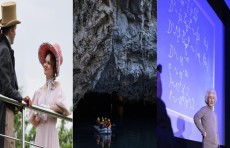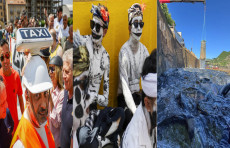China's Tiangong-1 space lab re-enters Earth's atmosphere over South Pacific
With a weight of 8.5 tons, Tiangong-1 is much smaller than the 80-ton Skylab and 140-ton Mir, and is unlikely to affect aviation activities or cause damage on the ground, the CMSEO said.
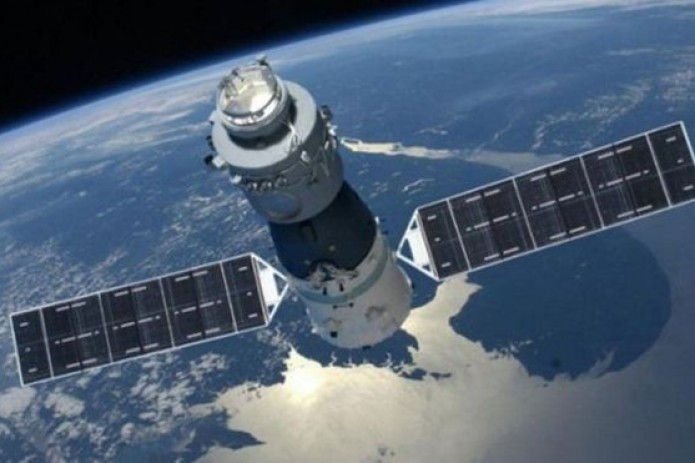
Tiangong-1, China's first space lab, re-entered the Earth's atmosphere at around 08:15 on Monday over the southern Pacific Ocean, and was mostly burnt up in the atmosphere, the China Manned Space Engineering Office (CMSEO) said.
With a weight of 8.5 tons, Tiangong-1 is much smaller than the 80-ton Skylab and 140-ton Mir, and is unlikely to affect aviation activities or cause damage on the ground, the CMSEO said.
Launched at the Jiuquan Satellite Launch Center in northwest China on Sept. 29, 2011, Tiangong-1 was tasked to test the technologies in rendezvous and docking between spacecraft and to accumulate experience for developing a space station.
It had successfully docked with Shenzhou-8, Shenzhou-9 and Shenzhou-10 spacecraft, and was visited by six astronauts, including two females. Tiangong-1, with a length of 10.4 meters and maximum diameter of 3.35 meters, provides a room of 15 cubic meters for three astronauts to live and work.
About one month after the launching of Tiangong-1, China sent Shenzhou-8 unmanned spacecraft into orbit. And on November 3, 2011, Tiangong-1 and Shenzhou-8 accomplished the country's first automatic rendezvous and docking at a height of 343 kilometers above the Earth surface. And then the two vehicles separated and docked for a second time during the same mission.
The successful rendezvous and docking between the target orbiter Tiangong-1 and the Shenzhou-8 spacecraft marked a significant breakthrough in China's space technology, making China the third country in the world, after the United States and Russia, to master the technique.
In June 2012, Shenzhou-9 spacecraft was thrust into space to dock with the orbiting Tiangong-1. This was China's first manned rendezvous and docking mission. Two docking tests, one automated and one manual, were accomplished between Shenzhou-9 and Tiangong-1.
It was also the first time for Chinese astronauts -- mission commander Jing Haipeng, crew mate Liu Wang and China's first woman astronaut Liu Yang -- to board Tiangong-1.
The mission realized the transport of astronauts and supplies to the space lab from Earth. The ability of Tiangong-1 space lab module to support the work and life of astronauts, the environment control, operation and performance of the docked spacecraft and lab module were tested.
The mission meant China had completely grasped space rendezvous and docking technologies, and the country was fully capable of transporting humans and cargo to an orbiter in space, which is essential for building a space station.
Launched in June 2013, Shenzhou-10 docked with Tiangong-1 twice, once through automatic operation and the other manually, aiming to further test technologies designed for docking and supporting astronauts' stay in space.
Three astronauts, including Nie Haisheng, Zhang Xiaoguang and Wang Yaping, spent 12 days in Tiangong-1, where they conducted space medical experiments and technical tests. Female astronaut Wang Yaping delivered a lecture to students on Earth about basic physics principles through a live video system, inspiring public enthusiasm for science and space exploration.
The lab had completed its main missions following Shenzhou-10's return to Earth in June 2013. During its extended flight, Tiangong-1 conducted experiments on space technology, space-earth remote sensing and space environment exploration.
It ended its data service on March 16, 2016.
Tiangong-1 was in service for four and a half years, two and a half years longer than its designed life, making important contributions to China's manned space cause, paving the way for China to become the third country in the world to operate a permanent space station around 2022.





.png)

